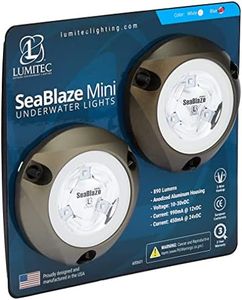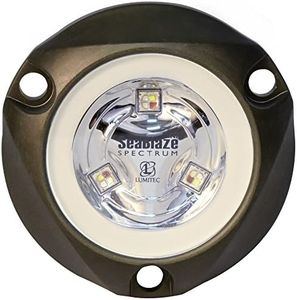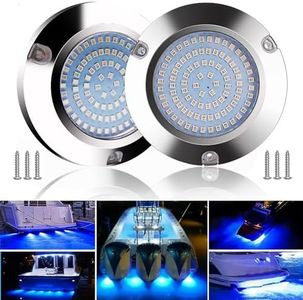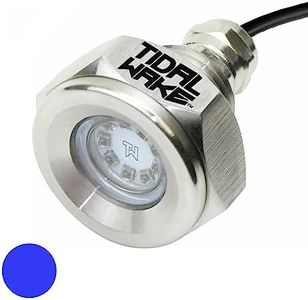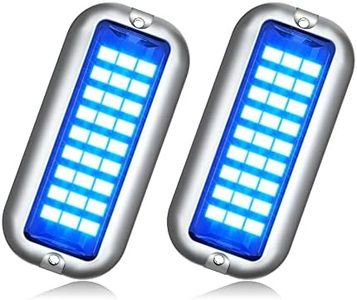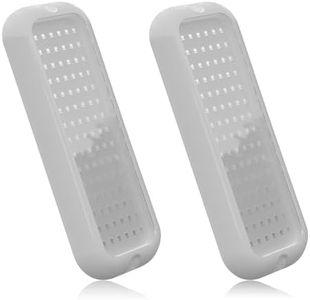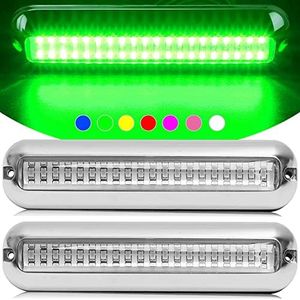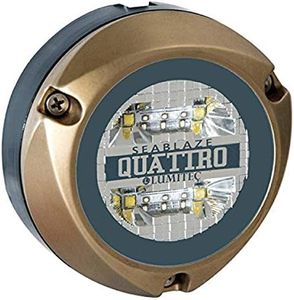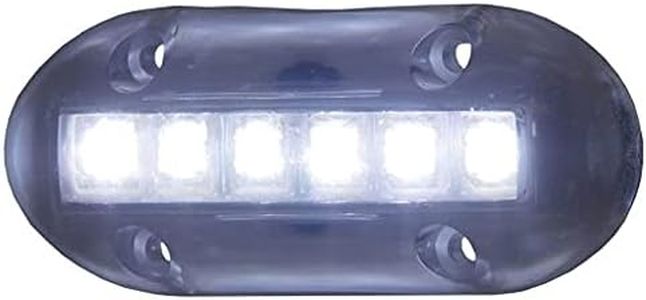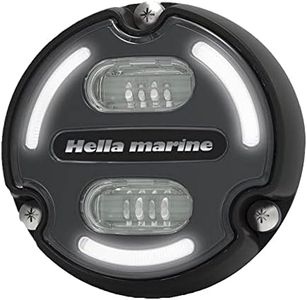We Use CookiesWe use cookies to enhance the security, performance,
functionality and for analytical and promotional activities. By continuing to browse this site you
are agreeing to our privacy policy
10 Best Underwater Boat Lights
From leading brands and best sellers available on the web.Buying Guide for the Best Underwater Boat Lights
Choosing underwater boat lights can enhance your boating experience, whether you're hoping to create a dramatic look on the water, attract fish, increase safety during night outings, or simply enjoy a better view beneath your vessel. To find the best fit for your needs, it's important to know which features truly matter, how to assess different options, and how your intended use should guide your decision.Brightness (Lumens)Brightness, measured in lumens, refers to how much visible light the underwater lights emit. This is a critical factor because brighter lights can illuminate a larger area and penetrate deeper into the water, making them more effective for visibility and aesthetics. Values can range from a few hundred lumens for subtle ambient lighting to several thousand lumens for high-impact illumination. If you want to create a soft glow for close-up ambiance, lower lumen lights will suffice. For fishing, showcasing your boat, or maximizing visibility in murky waters, opt for higher lumens. Think about how much light you need under what conditions—night cruising, fishing, or dockside entertaining—to choose the right brightness for your situation.
Color OptionsUnderwater boat lights are available in various colors, such as white, blue, green, or even multi-color (RGB) options. The choice of color affects visibility, attractiveness to fish, and the atmosphere it creates. White and blue lights tend to provide better visibility in clear water, while green is popular for attracting certain fish species. Multi-color lights offer the flexibility to change the ambiance or setting for different occasions. Consider why you want the lights: for fishing, select colors proven to attract your target species; for ambiance, think about the mood you wish to create; for general purpose, blue or white is often preferred.
Power Source and VoltageUnderwater boat lights usually operate on either 12V or 24V systems, depending on your boat's electrical setup. The power requirement should match your boat’s power system to ensure safe and efficient operation. Higher voltage systems are often found on larger boats and can handle more powerful lights, while 12V is common on smaller vessels. Verify your boat’s existing power setup and select a light that is compatible, ensuring you won’t risk electrical issues or require complex modifications.
Mounting TypeThere are different ways to mount underwater lights, including surface-mounted, thru-hull, and drain plug options. Surface-mounted lights attach directly to the boat’s hull and are generally easier to install. Thru-hull lights require drilling a hole through the hull, offering a more streamlined look and potentially better performance but are best for permanent installations. Drain plug lights replace the existing drain plug for a non-permanent solution. Your choice should depend on your willingness to modify your boat, your installation skills, and whether you want a temporary or permanent setup.
Waterproof Rating (IP Rating)The waterproof rating, typically denoted by an IP (Ingress Protection) code, indicates how well the lights prevent water from entering. This is vital since these lights will be submerged, and poor waterproofing can lead to failure. Look for higher ratings like IP68 or IP69, which mean the lights are fully submersible and resistant to prolonged immersion. If you boat in saltwater environments, ensure the lights are rated for saltwater use to prevent corrosion. Always match the waterproof rating to your boating environment to ensure longevity and safe operation.
Material and DurabilityThe materials used in underwater boat lights—commonly marine-grade stainless steel, bronze, or high-impact plastics—determine how well the light withstands constant exposure to water, salt, and impact. Stainless steel and bronze offer high resistance to corrosion, making them ideal for saltwater, while robust plastics may suffice for freshwater use. Durability is especially important if you plan to leave the lights installed year-round or boat in harsh conditions. Consider your usage pattern and typical boating environment to prioritize lights made from materials that match the level of exposure and wear.
